Editor’s Note: This post is written by a member of LTV’s sponsored content team, The Leisure Explorers. Do you own a Leisure Travel Van and enjoy writing? Learn more about joining the team.
Living Among the Saguaros
One of the advantages of planning a trip in advance is getting reservations at highly coveted campgrounds. In the Tucson, Arizona area, Pima County’s Gilbert Ray Campground is one of those places. You’ll feel like you are living in a cactus garden dotted with saguaros and other odd-looking spiny plants.
This stop was the second place we stayed in Arizona on our trip from Michigan to California in the winter of 2022 in “Lucky Us,” our 2015.5 Unity Murphy Bed. Now, past the high wind advisories and freezing night temperatures, we could relax a bit except for safeguarding against one little creature–pack rats. We’ll get to that later.
Gilbert Ray Campground
The saguaro cactus (pronounced sa-wah-ro) can be found only in the Sonoran Desert and the largest of the saguaro. If you are driving from Tucson to Gilbert Ray Campground, it will seem like the road guides you into a cactarium where statuesque saguaros, the symbol of the American West, surround you. Stop and take in this unusual ecosystem, home not only to giant saguaro but also agave, yucca, barrel cactus, pincushion cacti, prickly pear, and the cholla.
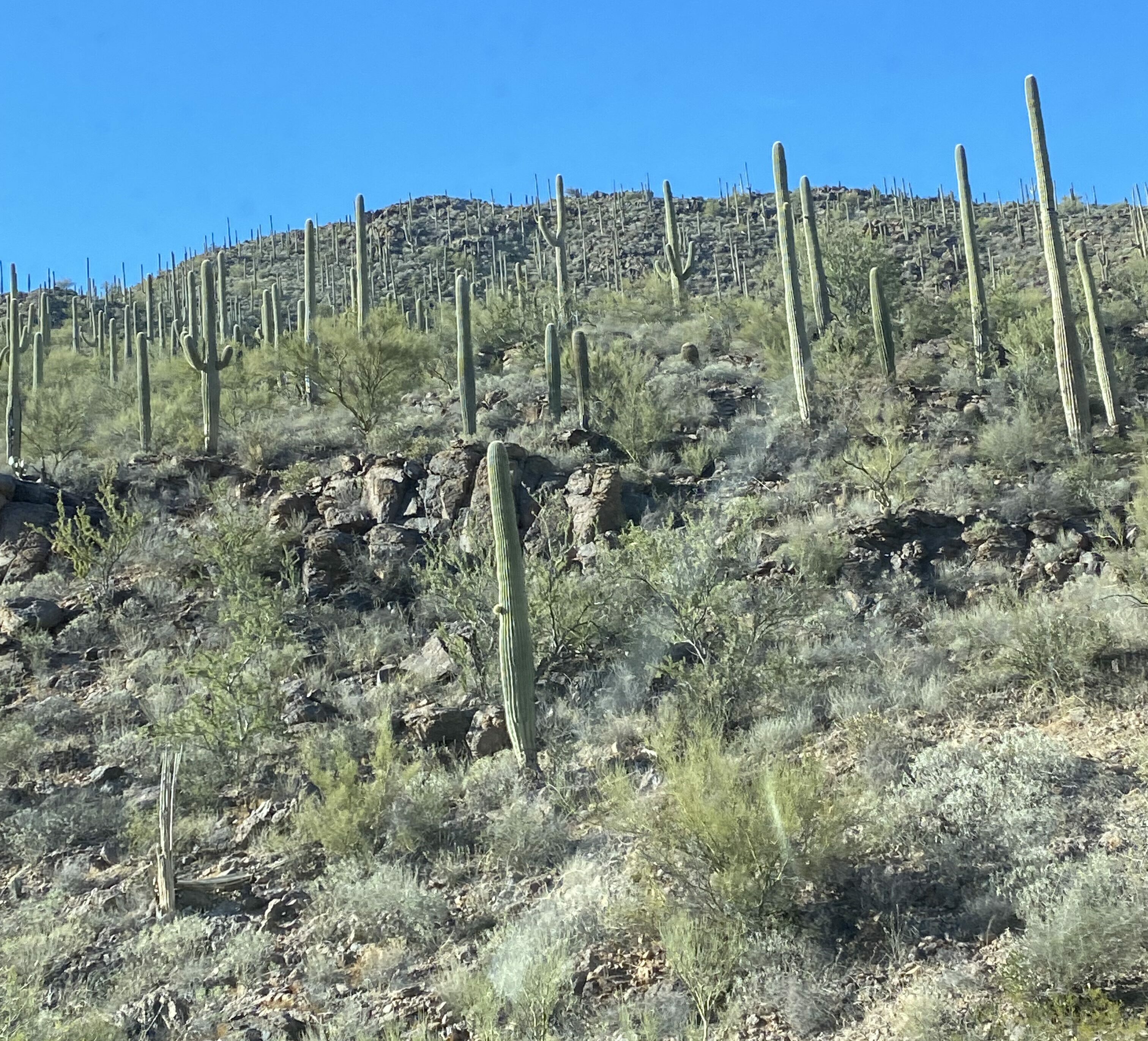

Gilbert Ray boasts an extensive trail system and great wildlife viewing and is just down the road from the Arizona-Sonora Desert Museum and Saguaro National Park. Want to see a bobcat, a river otter, and a bighorn sheep? They are on exhibit at the museum, along with a 1,100 square-foot aquarium that features the region’s freshwater rivers and aquatic life, compared with salt-water species representing Mexico’s Sea of Cortez. While the Sea is to the south, summer monsoon rains that develop there bring life-giving moisture to the desert, and if that’s not enough, you can explore their gardens to discover the names of all those prickly plants dotting the landscape.
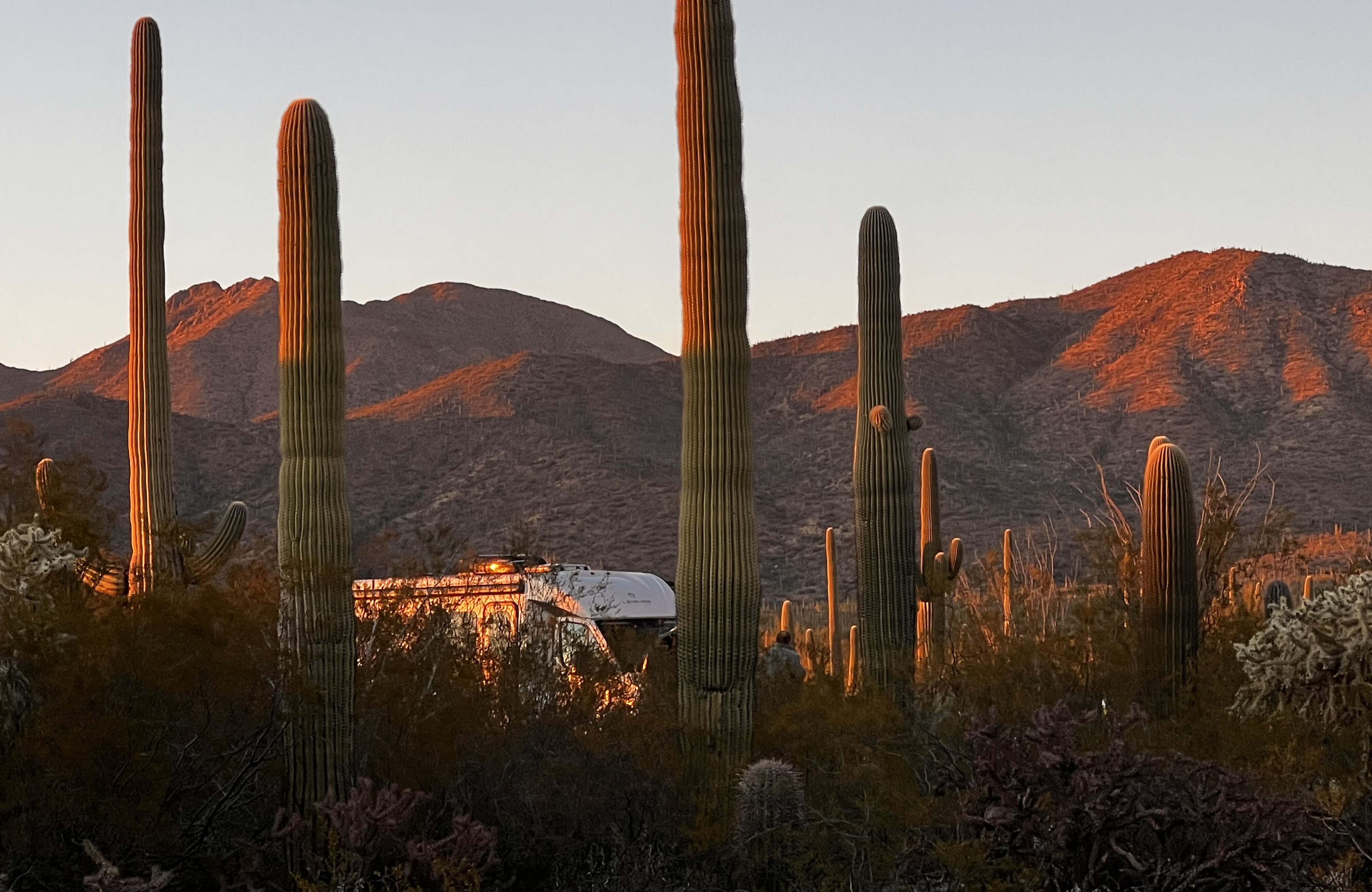
For me, every giant saguaro was unique. Some grow arms, some do not, and some seem to develop button noses, which eventually turn into arms. I’ve read stories that the summer of 2023 has not been kind to the saguaros, with many suffering damage by extreme heat.
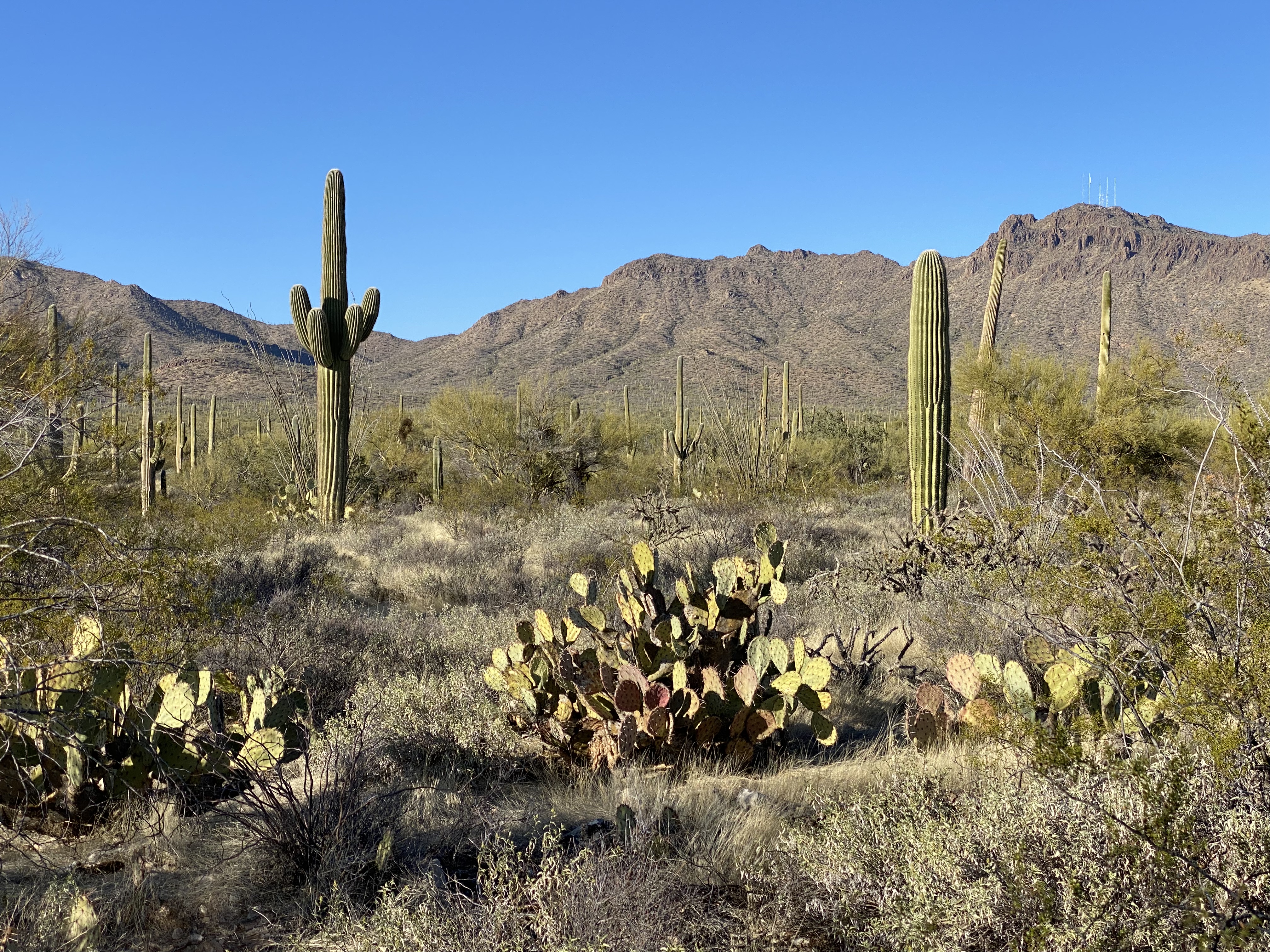
Pack Rats
So, what about pack rats? These devious rodents, also called white-throated wood rats, are known for destroying vehicles by chewing through the insulation used on engine wires. These cute but unscrupulous little creatures can easily cause hundreds if not thousands of dollars of damage in one night. The campground host cautioned that he had no surefire ways to keep them at bay and joked that they like the soy in the insulation. We propped up our hood and placed Fresh Cab rodent repellent packets and solar-powered string lights on the engine, once cooled, each night. We also placed the empty box of the Fresh Cab on the dash to remind us to remove the packets in the morning before driving. We do not guarantee this will work for you, but it did work for us.
Saguaro National Park
Saguaro National Park has two districts: Rincon Mountain District (East) and Tucson Mountain District (West). Camping (hike-in, no RVs) is available at the Saguaro Wilderness Area. Gilbert Ray Campground is just south of the Tucson Mountain District. After stopping at the Red Hill Visitor Center, we drove the six-mile Bajada Loop Drive, a graded dirt road. From the visitor center, drive 1.5 miles to Hohokam Road. Follow Hohokam Road and turn left at Golden Gate Road. If you have time, stop at Signal Hill to view the petroglyphs.
Tortolita Mountains
We were lucky to have friends in the Tucson area who took us to Marana to hike the Upper Javelina Trail, part of the Wild Mustang Trail in the Tortolita Mountains. We packed plenty of water and snacks, and I used my trekking poles to traverse the uneven, rocky trails.
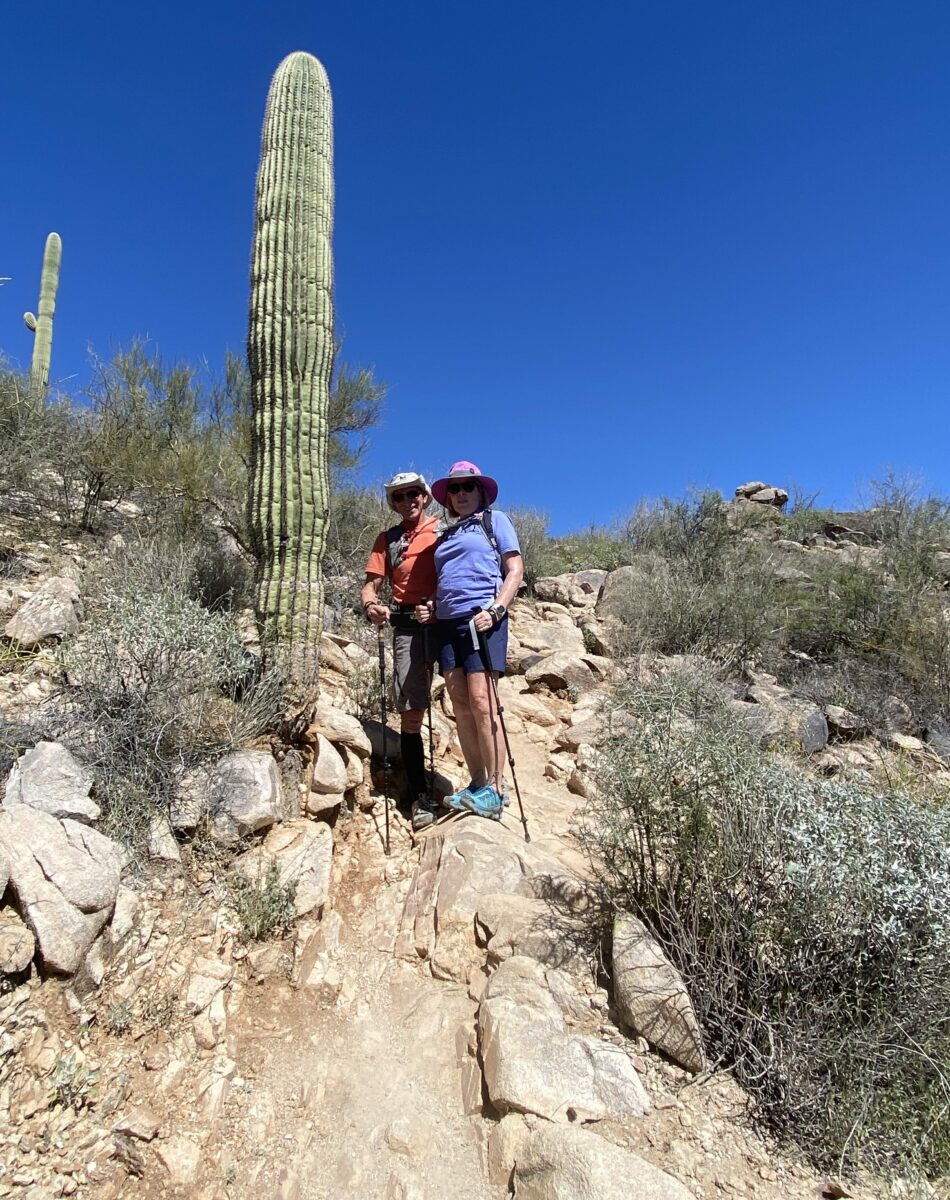
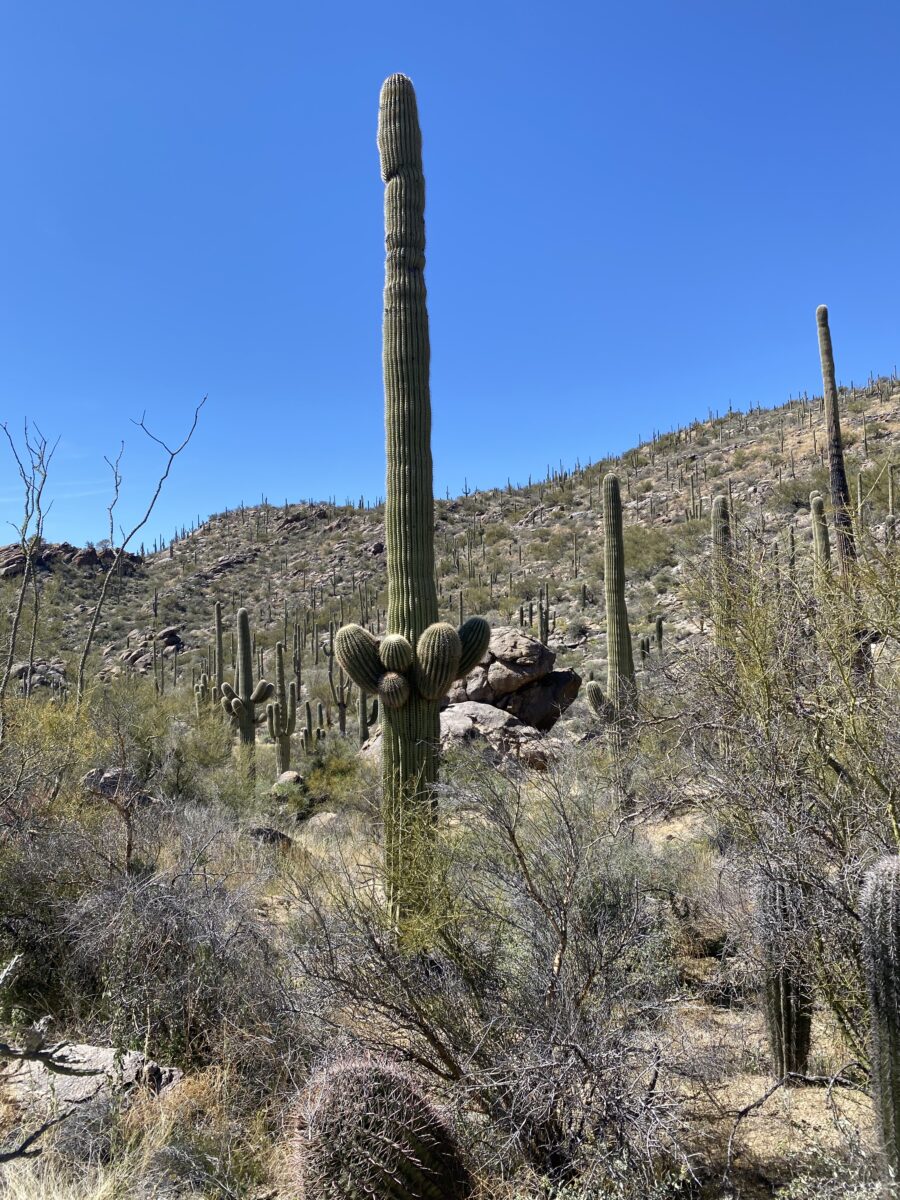
When You Go
Reservations can be made up to one year in advance at Gilbert Ray Campground. When planning a hike, always be aware of weather conditions, wear suitable clothing and sturdy hiking boots, and bring plenty of water. Also, know your abilities and use trekking poles or a hiking stick.


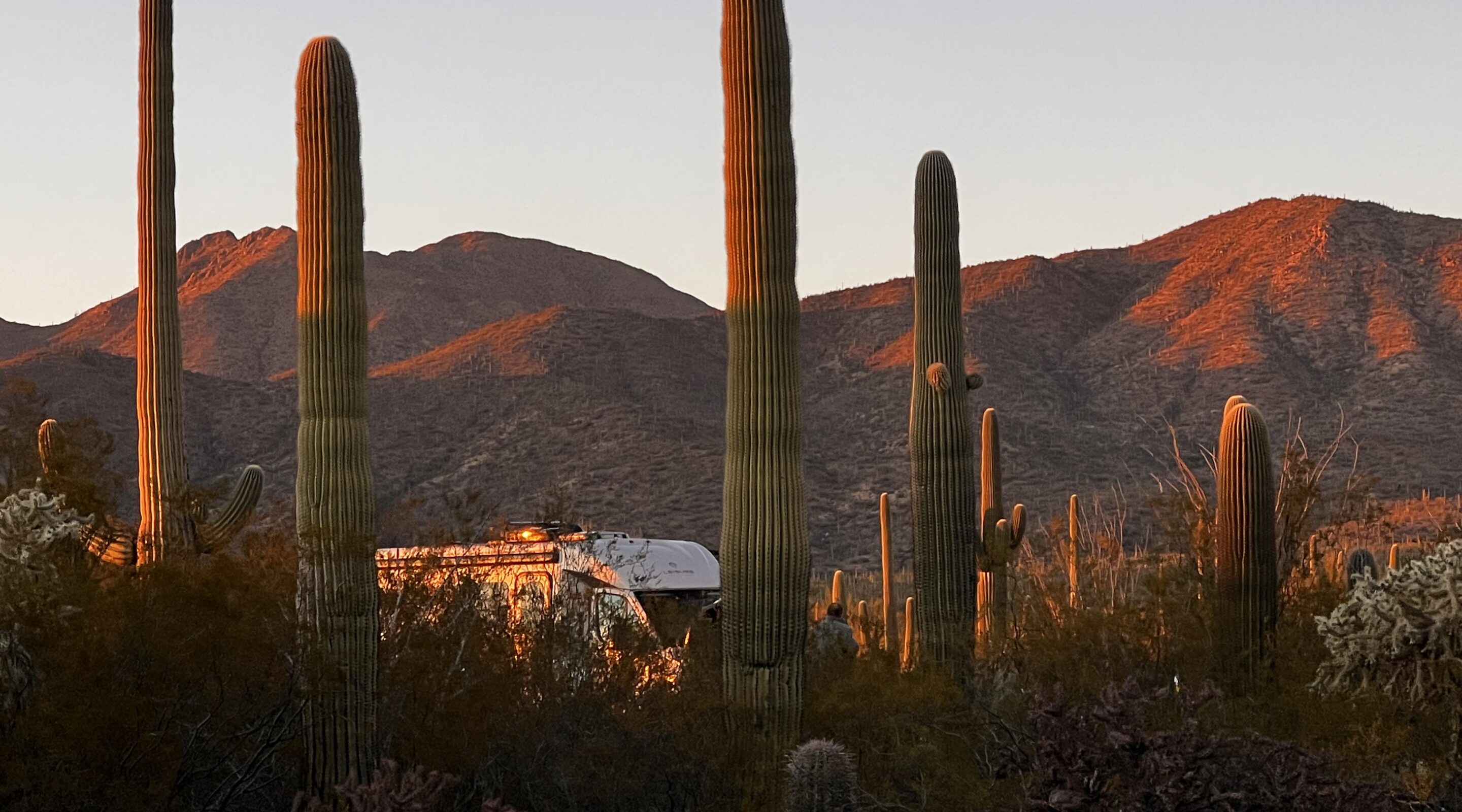
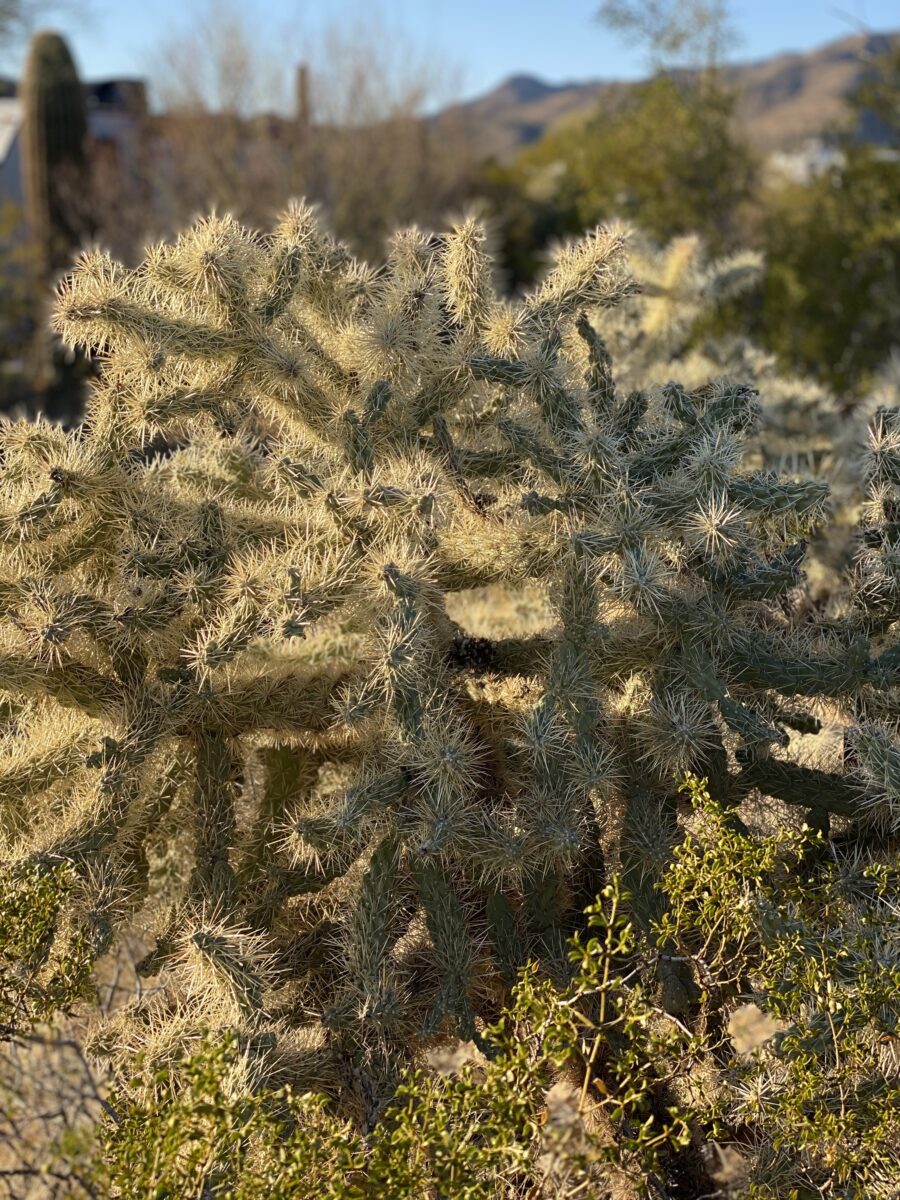


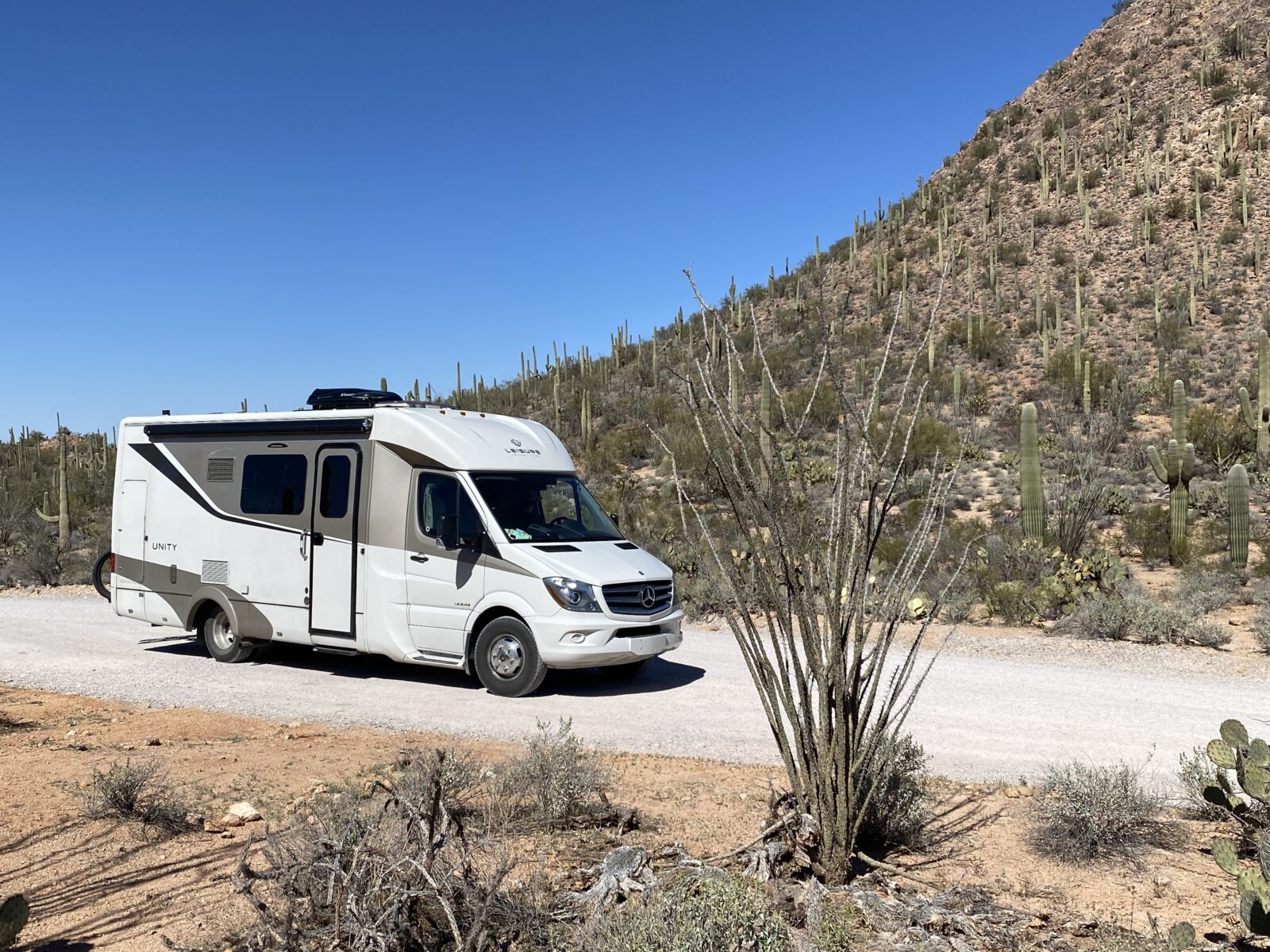
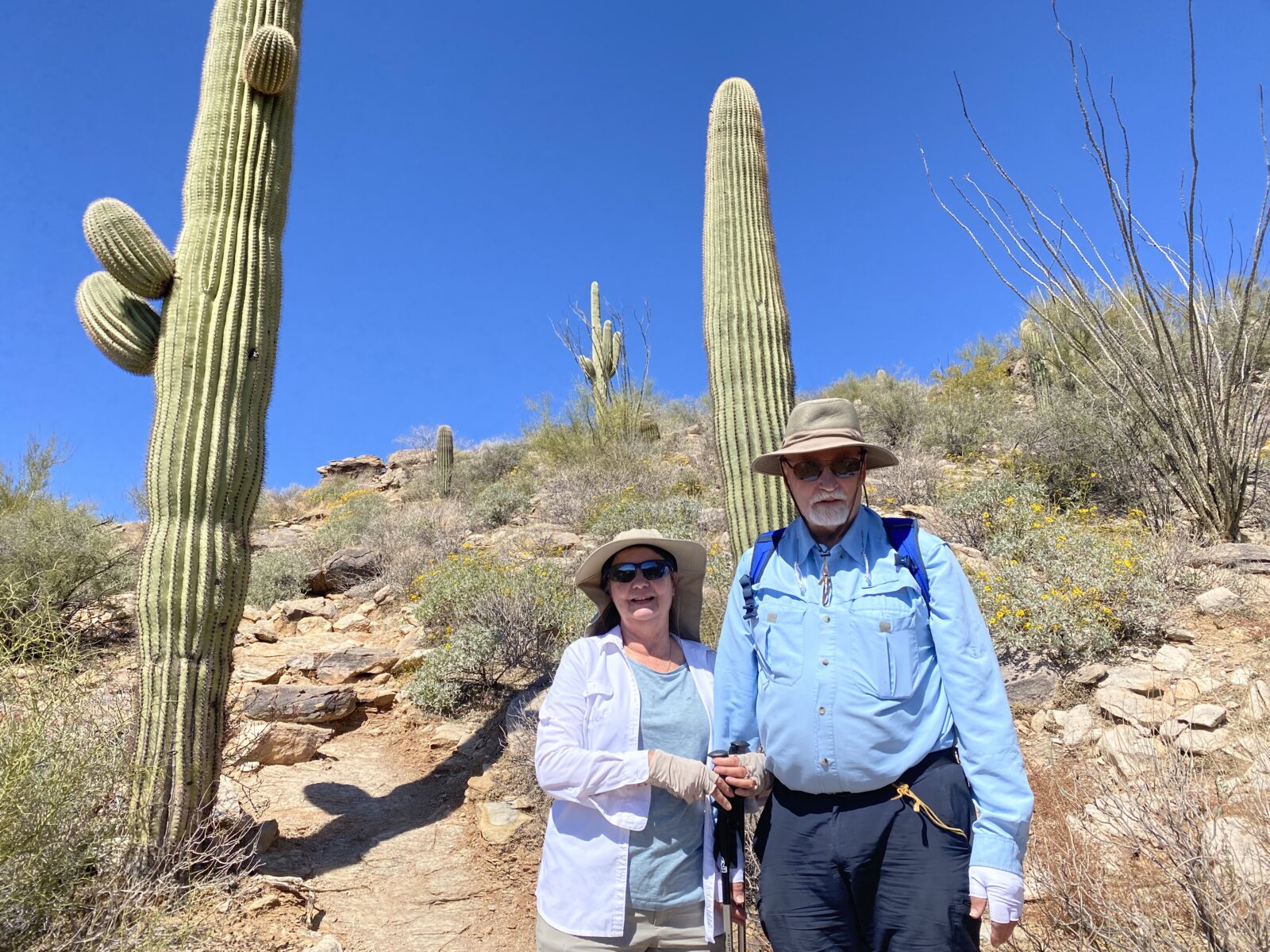
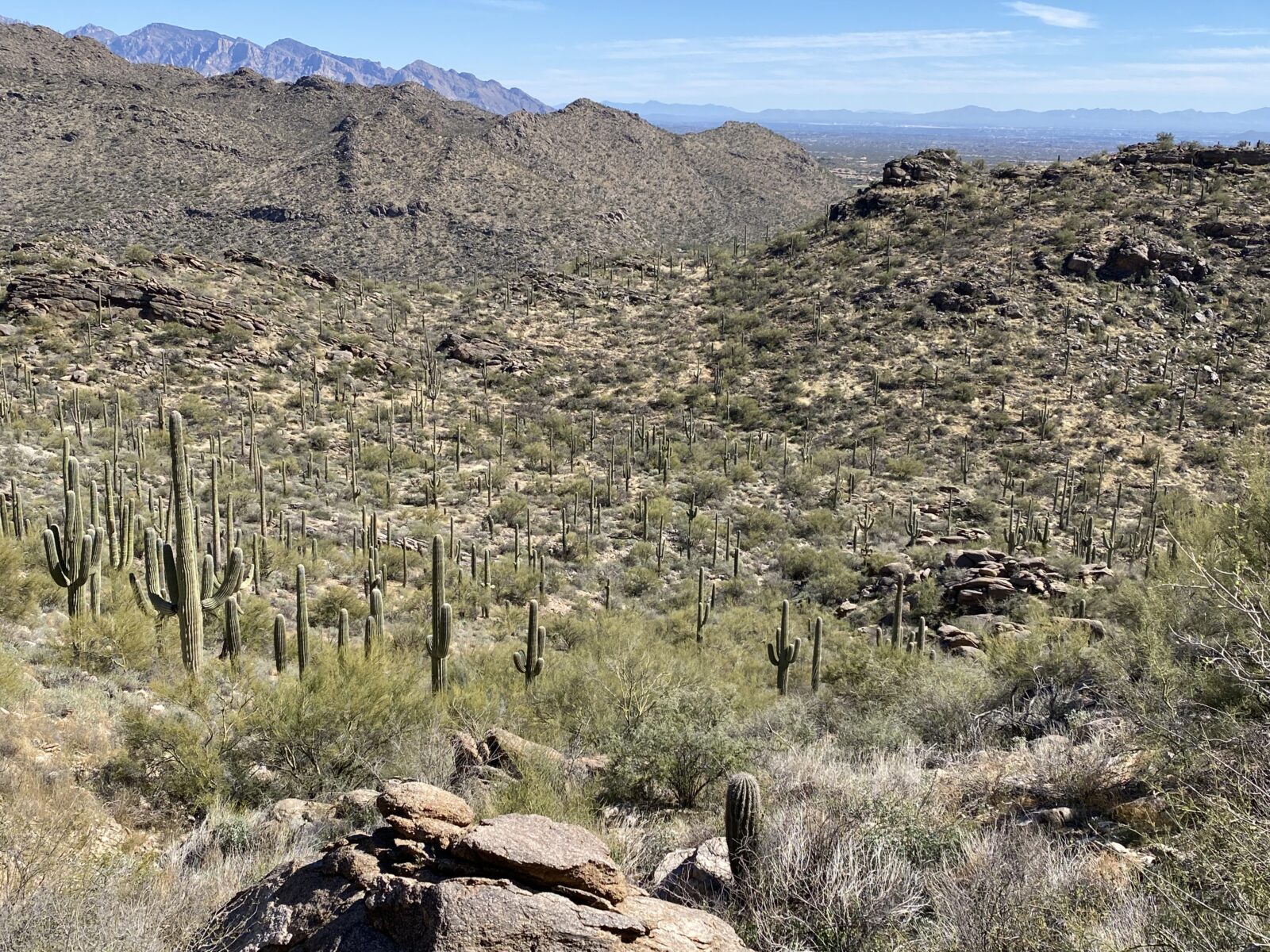



Comments